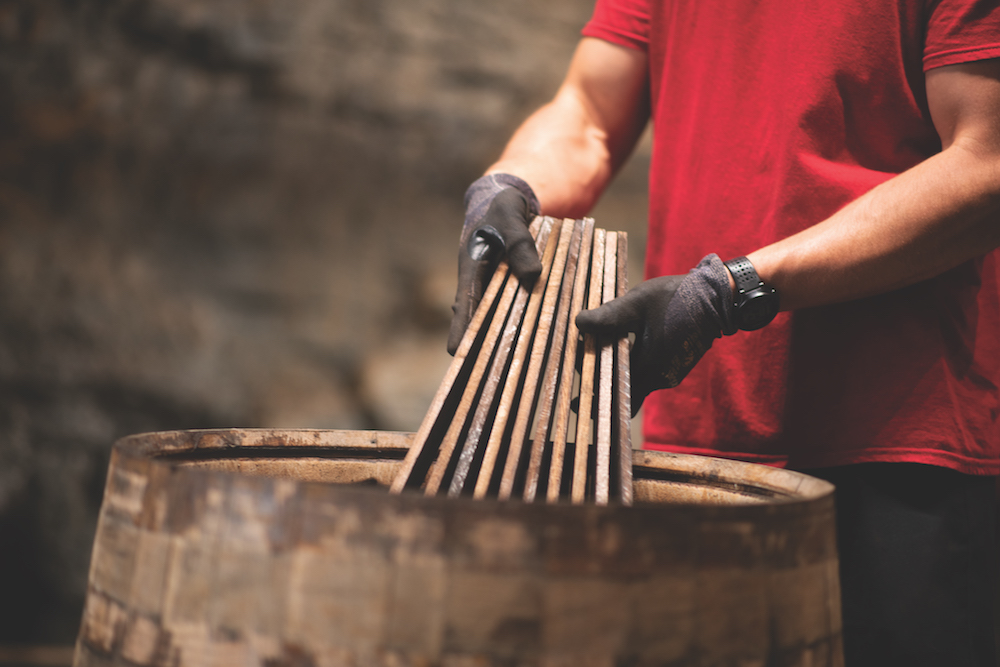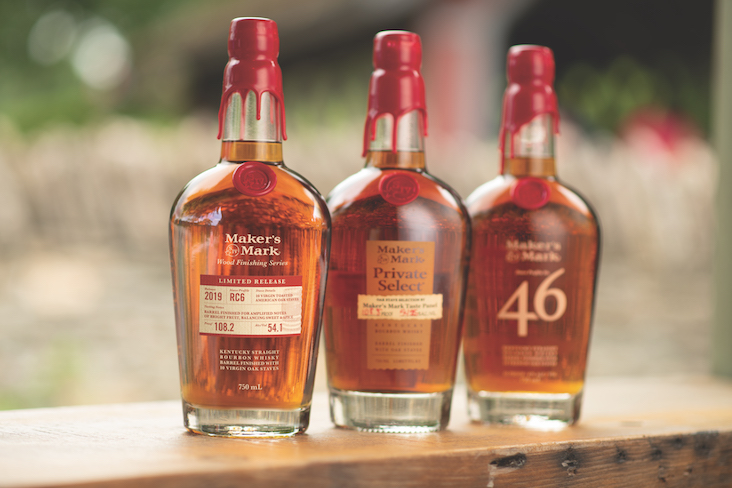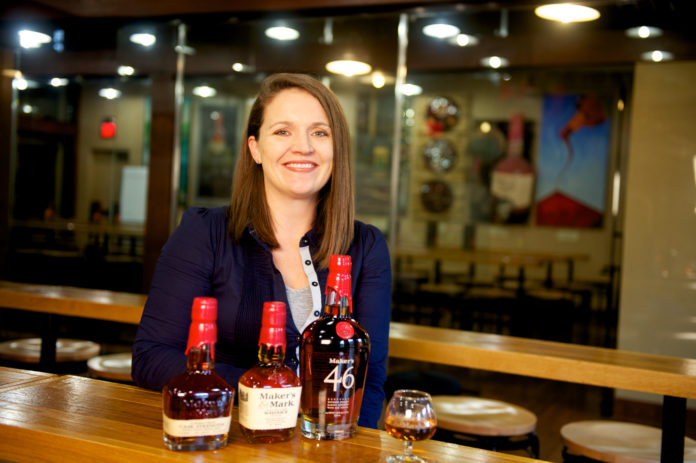Maker’s Mark Distillery, which is not necessarily known for new products, last month announced its first-ever nationally available limited-release bourbon. With the (long) name of Maker’s Mark Wood Finishing Series 2019 Limited Release: Stave Profile RC6, this cask strength bottling is 108.2 proof — far above Maker’s standard 90 — and was finished with proprietary wood staves known as RC6.
With a name like a Star Wars droid, you’d expect something futuristic. RC6 delivers. Made in partnership with Independent Stave Company, these staves are American Oak seasoned outdoors for 18 months, then toasted in a convection oven.
The experiment is meant to accentuate the natural fruit flavors of Maker’s Mark. Having sampled RC6, it comes as advertised. Rich fruity flavors of plum and raisin balance perfectly with the oak and heat. It’s a smooth, fruitier, different take on the classic Maker’s profile.
For a deeper look into what brought about this innovation from a company better known for consistency than variation, I recently spoke with Jane Bowie, Maker’s Mark Innovation Expert.

Beverage Dynamics: A limited-edition whiskey is a new look from Maker’s Mark. What was the thinking?
Jane Bowie: I have to go back to the beginning, with Maker’s Mark 46. I remember during that experience — which began in 2008 — how we were experimenting with Independent Stave Company, and I thought, ‘Oh my goodness, there’s so much more flavor in oak that we’re missing out on! What else is out there?’
That really opened up our eyes towards exploring the different profiles. We have since experimented with hundreds of different staves.
BD: What was the inspiration for RC6?
JB: This one is inspired by the proprietary yeast strain that we propagate onsite every day. It’s a 2.5-day process to propagate. It brings so much flavor, and sets the tone for what’s going to happen in the barrel. This stave experimentation was inspired to highlight what flavors you get from that yeast. I find there’s pear, banana and something almost like the flavors of a Hefeweizen beer.
We wanted to create a stave that showcases the flavors that Maker’s has in abundance, but don’t necessarily get the top billings like caramel and vanilla.
BD: So how did you accomplish that with the wood?
JB: The funny thing is that wood doesn’t naturally impart fruit characteristics. So it took a lot of experimenting to get there. How could we get the whiskey to be a fruitier, brighter version of Maker’s, which shows off the propriety yeast? And that’s what I love about this whiskey: it is so fruity and bright and spicy, with the classic Maker’s sweetness to keep everything in balance.
With this American white oak stave, the original common-sense thinking told us that the acidity in the wood might provide more bright fruit. And we originally thought that less outdoor seasoning would help keep the acidity higher. But this stave was the opposite. We found out that the best route was 18 months of outdoor seasoning, followed by one day in the convection center on a medium temperature.
This Maker’s Mark cask strength whiskey also spent nine weeks in our limestone bourbon cellar.
BD: RC6 is part of an innovative series of planned limited releases. Why start releasing these whiskeys now?
JB: The thing is, we’ve been doing these experimentations for years. We finally thought it was the right time to bring people along on the journey. People today are more discerning about what they’re eating and drinking. They want more flavor than ever before in whatever they spend their time, money and calories on.
Maker’s 46 turns nine years old this summer. When we launched that in 2010, the market was so different. Maker’s 46 was a little ahead of its time. Now we’ve had nine years of producing Maker’s 46, and talking about it, and we’re in a place of understanding innovation and the flavors we can create — and we’re excited to share all this with other people.
BD: Anything you can tell us about what’s next in this experimental series?
JB: We’re continuing to do a lot of experimentation around oak. It’s all flavor-driven. Also, we’re looking at how these whiskeys finish on your palate, the viscosity and the texture. We’ll continue looking at where flavor comes from in Maker’s Mark, like how RC6 focuses on the yeast strain. Where else can we go and capture flavor? How far can we go on the flavor spectrum?
While we can’t give out exact details, we obviously have lots of different things in the works, inspired by all the processes that we can do here. We want to release a new experimental product yearly. That’s the idea. We’ll see if we can keep up with that goal.

BD: I’ve been asking this question to all distilleries: What are you thoughts on the booming whiskey secondary market? And for the matter, what about the newer trend of people posting their large collections of unopened whiskey on social media?
JB: It’s fun to watch what’s been going on with the bourbon secondary market and social media in the last five-to-ten years, but unopened whiskey sitting on shelves is never what you want. You want people to consume whiskey.
My opinion on the secondary market is that it’s been both wonderful and terrible for the industry. I hope that people are buying this new whiskey to go home and share it with friends, and to compare it with Maker’s 46. That was certainly the intention with this: to be consumed with friends.
Kyle Swartz is editor of Beverage Dynamics magazine. Reach him at kswartz@epgmediallc.com or on Twitter @kswartzz. Read his recent piece Talking Whiskey With Eddie Russell.







[…] Kyle Swartz is editor of Beverage Dynamics magazine. Reach him at kswartz@epgmediallc.com or on Twitter @kswartzz. Read his recent piece Interview: Maker’s Mark’s Jane Bowie on Innovating Bourbon. […]
[…] We’ve been asking this of all distilleries: What’s your thought on the booming secondary market, and the social media trend of people […]